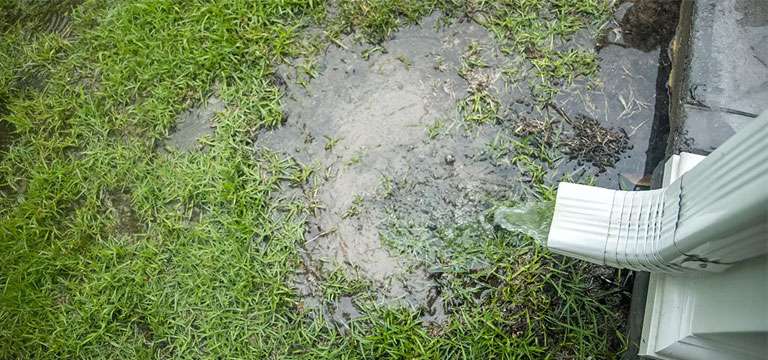Southampton’s wet coastal climate means that surface water drainage plays a crucial role in protecting homes from flooding, pooling and long-term structural damage. When heavy rain hits the city, water needs a fast and reliable route away from roofs, patios, gardens and driveways — and that’s exactly what a well-designed surface water drainage system provides.
In this guide, we break down how these systems work, the components involved, the issues homeowners often face, and what you can do to keep everything flowing smoothly all year round.
Understanding surface water drainage in Southampton
Surface water refers to rainwater that falls onto your property — including roofs, gutters, driveways, patios and landscaped areas. Because Southampton experiences frequent rainfall and coastal storms, the drainage route needs to be efficient, resilient and compliant with local regulations.
A typical system includes:
- Gullies
- Aco channels
- Soakaways
- Rainwater downpipes
- Underground pipework
- Manholes and inspection chambers
Each part plays a role in preventing excess surface water from finding its way into your home, foundations or garden.
How water flows through your drainage system
When rain lands on your property, the flow follows a clear path:
- Roof rainwater → gutters and downpipes
- Driveways & patios → aco channels or gullies
- All water routes → underground surface water pipes
- Pipes discharge → soakaway, storm drain or drainage network
If one section becomes blocked, water backs up quickly — a common issue we see across Southampton’s residential estates, especially in areas like Portswood, Bitterne, Highfield and Woolston.
Common problems with surface water drains in Southampton
Some of the most frequent issues we find during repairs and CCTV drain surveys Southampton include:
1. Blocked gullies and aco channels
Leaves, silt, moss and debris build up fast after heavy rain or storms.
2. Soakaway failures
Southampton’s varying soil types — from free-draining chalk to heavy clay — can cause soakaways to block or overflow.
3. Cracked or collapsed storm pipes
Ageing clay or pitch fibre pipes deteriorate and may collapse under vehicle weight from driveways.
4. Misconnections
Homes sometimes connect roof water into foul drains — illegal and a major flooding risk.
5. Insufficient capacity
Older homes often have small-diameter pipes not designed for modern rainfall intensity.
The role of CCTV surveys for diagnosing drainage issues
A CCTV drain inspection allows engineers to identify blockages, cracks, root intrusion, silt deposits and structural issues that affect surface water flow.
Learn more: CCTV drain surveys.
These surveys help determine whether jetting, root cutting, pipe relining or excavation is required.
Surface water vs foul water: Why the difference matters
Southampton homes have two separate systems:
- Foul water → toilets, taps, appliances
- Surface water → rainwater runoff
Mixing the two causes:
- Sewer flooding
- Contamination risks
- Water company penalties
If you’re unsure how your system is set up, a quick inspection can confirm.
Preventing flooding in Southampton homes
A few practical steps make a big difference:
1. Keep gullies and aco channels clear
Debris buildup is the most common cause of local flooding.
2. Jet the system annually
Regular drain unblocking and drain repairs stop silt and moss from restricting flow.
3. Maintain soakaways
A CCTV check can confirm if they’re functioning or backing up due to soil saturation.
4. Avoid heavy vehicles over drainage pipes
Older pipe systems can collapse under weight.
5. Install leaf guards
They reduce the debris entering downpipes and gullies.
When to call a professional
You should contact a drainage engineer if you notice:
- Water pooling on the driveway or garden
- Gullies overflowing during heavy rain
- Damp spots near external walls
- Slow water draining from patios
- Gurgling noises from the drain system
Southampton’s unpredictable rainfall means issues can escalate quickly, so early inspection prevents expensive repairs.
📞 Need help with surface water drains in Southampton?
Our engineers diagnose blockages, repair pipes and restore proper flow fast.
We’re available 24/7 across the city.
Surface Water Drainage FAQs
What are surface water drains?
Surface water drains carry rainwater from roofs, gardens, patios and driveways into soakaways or storm drains. Their job is to prevent flooding and protect your home from water damage during heavy rainfall.
Why do surface water drains block?
Leaves, moss, silt, stones and debris commonly cause blockages. In Southampton, this often happens after storms when gutters overflow and wash debris into gullies and aco channels.
How do I know if my surface water drain is failing?
Pooling water, overflowing gullies, slow drainage across patios and damp patches near walls are common signs. A CCTV survey provides a clear diagnosis.
Do surface water drains need regular maintenance?
Yes. Annual jetting and gully cleaning prevent blockages and extend the lifespan of your drainage system, especially in high-rainfall coastal areas like Southampton.
Can you repair collapsed surface water pipes?
Collapsed pipes can be relined using no-dig methods or replaced through targeted excavation. A CCTV inspection determines the most effective repair option.

